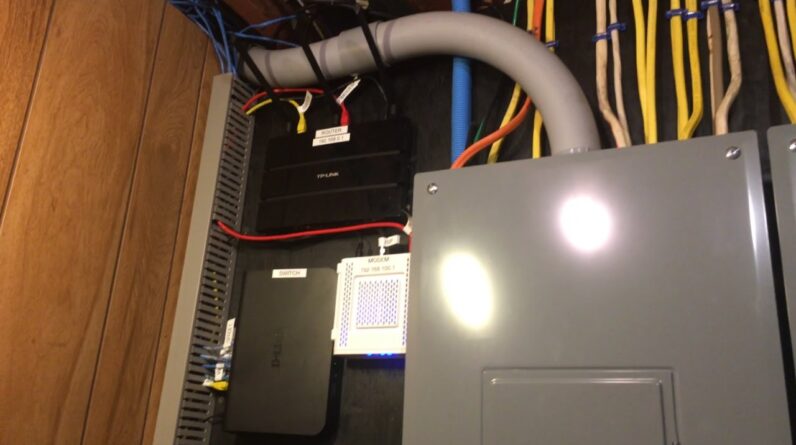
Hey guys Matt here from mksmarthouse.com and
in this video I am going to give you a demo of the Network we are going to be creating. [Intro] So the point of this demo is to show you the
system in action as well as how it all works. Also, when each one of these 4 videos in the
network series hits 100 likes I will release the video of setting up the home automation
server with OpenHAB 2 sooner than it is planned. Anyway, let’s start off with the device
in action part. Let me just take out my phone and as you can
see we have a couple different wifi networks. With the network we have two sets of wireless
we have the guest wifi and the normal personal wifi. Then within those two sets we have the 2.4GHz
and the 5GHz. The 5GHz is the faster one and whenever possible
always use it but some devices are not 5GHz capable so they would use the 2.4GHz. Another thing is that with this network and
the wireless I have full wifi coverage throughout the property from outside to the second floor.
Which for this Smart Home system is very necessary. We can also access anyone of these wifi networks
from anywhere around the house. With this network we can also connect many
wired device that we have. To end off what it can do I am just going
to show you the speed test of the wired network and the wireless network. It can handle quite a bit. So, now let's go over how it all works. Down here in the basement we have the main
network which consists of the Modem, Router and ethernet switch. We start off by getting internet from the
ISP through this coaxial cable which then goes into the modem and gets outputted through
this red ethernet cable and goes into the router.
The router is the brain of the network as
it assigns IP addresses and talks with the modem. This router also is one part of the wireless
setup. Then we have this yellow ethernet cable which
goes to the ethernet switch and it distributes the ethernet signal between all the wired
devices in the house including the two wifi access points that I have. One of the access points is in the garage
so I have an ethernet cable running to there and then I have another access point in my
room where I have ethernet jack that goes to the ethernet switch.

The access points are what are responsible
for increasing the wifi range which is why I have two of them in addition to the main
router's wifi. I am not saying they are necessary to everyone
but what is necessary is complete wifi coverage throughout the entire home so all the future
sensors and devices can connect to it. That’s it that is the network we will be
creating in the next couple of videos, first is the hardware video where we connect everything,
next is the software video where we configure everything and then lastly, we have the final
installation video where we mount and install everything in their final positions. If, you have a network already which you probably
already do, then you should still watch these videos as there might be something I do differently
than you.
Also, even if you have a network you could
get some ideas from mine on some upgrades you could possibly do such as a new router
or increasing the wifi range using access points. Some of you might be saying, just show us
the smart home stuff and I am, I am showing the complete process from start to finish
of a smart home and the network by far is the most important because if you don't have
a strong network the communication between devices will be terrible and your smart home
will fail. The point is make sure you have a very stable
and fast network, which you can watch these next videos to make sure. Alright thank you for watching and If you
have any questions leave them in the comments section below or head over to mksmarthouse.com/forum
where you have a better chance of it getting answered. Good Bye!.
As an Amazon Associate I earn from qualifying purchases.







